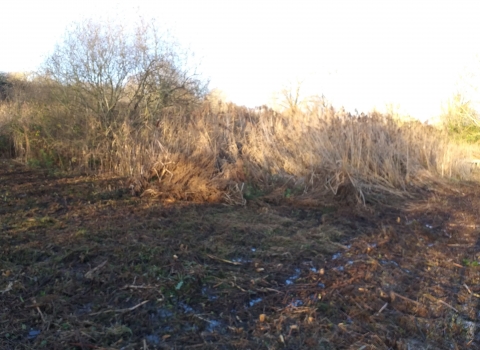
© NWWT
Before
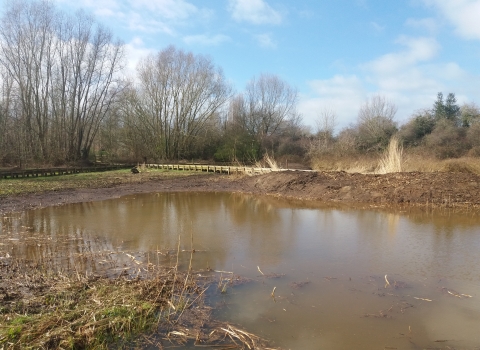
© NWWT Henry Cook

© NWWT

© NWWT Henry Cook
Earlier on in the year the Wrexham Industrial Estate Living Landscape project took on the restoration of Marchwiel Marsh near Wrexham. This is a site that has a boardwalk, wet meadow, towering willow trees and reeds. Most famously it used to have ponds that were well-known for their great crested newts; a priority species locally and wider in Wales. The Wrexham region has one of the largest populations of the species in the whole of Europe. These newts are characterized by their large size, dark, bumpy skin, orange belly with spots, plus the so-called ‘crest’ running down the spine of the males in particular which make them resemble mini dinosaurs!
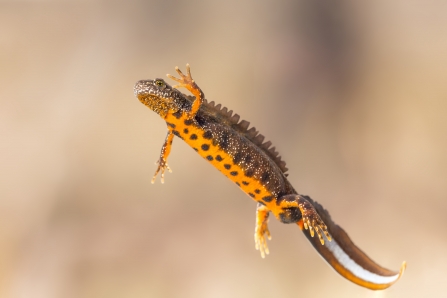
Great Crested Newt/Madfall ddwr gribog © TWT
The ponds hadn’t been touched for years and the suitability for the newts was decreasing over time.Henry Cook, Living Landscape officer
The building up of detritus and mud in the ponds meant that they were drying out. For a week we had a digger on site, working to a plan to produce a range of pond depths. All the ponds had sloping edges so that as they dry out somewhat in the summer, animals can get out of the water. Two other ponds were restored to a similar specification and a new pond was dug from scratch, increasing the opportunities for the newts to breed successfully. It wasn’t all plain-sailing as the digger nearly got stuck in the mud on one day, such was the amount of sludge from the decomposing reeds.
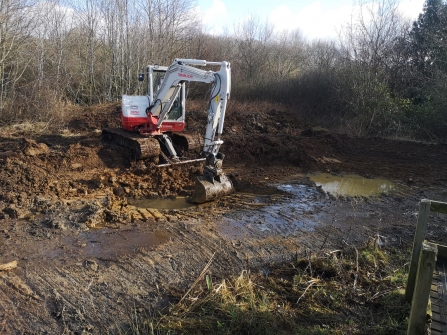
Digging out a pond/cloddio pwll © NWWT
The Wildlife Trust volunteer team visited and had a very productive day mending the boardwalk and felling encroaching willow saplings. It was a case of ‘many hands make light work’ and demonstrates how important our wonderful volunteers are to nature conservation. One final touch was to add some artificial nesting habitat for the newts to add to a bit of remaining vegetation in each pond. This was done by tearing a bin bag into strips and tying it onto a cane to insert in the deep water; a simple solution until all the pond-plants grow back, with the added bonus of looking like a pirate whilst installing them!
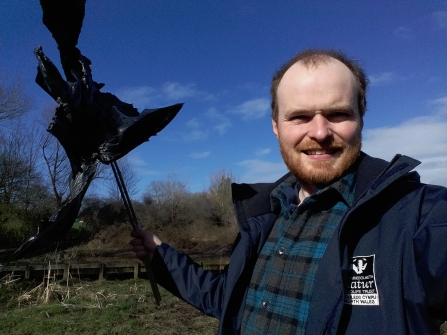
Artificial newt breeding habitat/Cynefin bridio madfall artiffisial © NWWT
Once all was done, we informed the local community and people were able to visit the wetland once again. Families were now able to enjoy the boardwalk and see ducks, reed buntings and enjoy the open and safe aspect that had been created. The comments so far have been lovely, from people not even knowing the marsh was there to others saying how it had fallen into disrepair but was now a great place to visit on their doorstep.
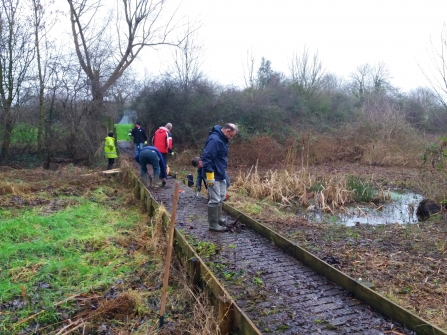
Volunteer event/Digwyddiad gwirfoddoli © NWWT
With lockdown due to the Covid-19 Coronavirus please only visit if it is safe to do so on your daily exercise. Nature will be carrying on just as it always has.
This project has received funding through the Welsh Government Rural Communities - Rural Development Programme 2014-2020 – Sustainable Management Scheme which is funded by the European Agricultural Fund for Rural Development and the Welsh Government.
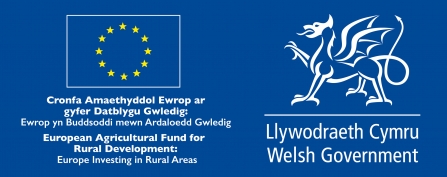
If you are interested in helping to make a positive difference to nature, and create attractive-looking landscapes in the process, please contact us to volunteer or work with us on your land.